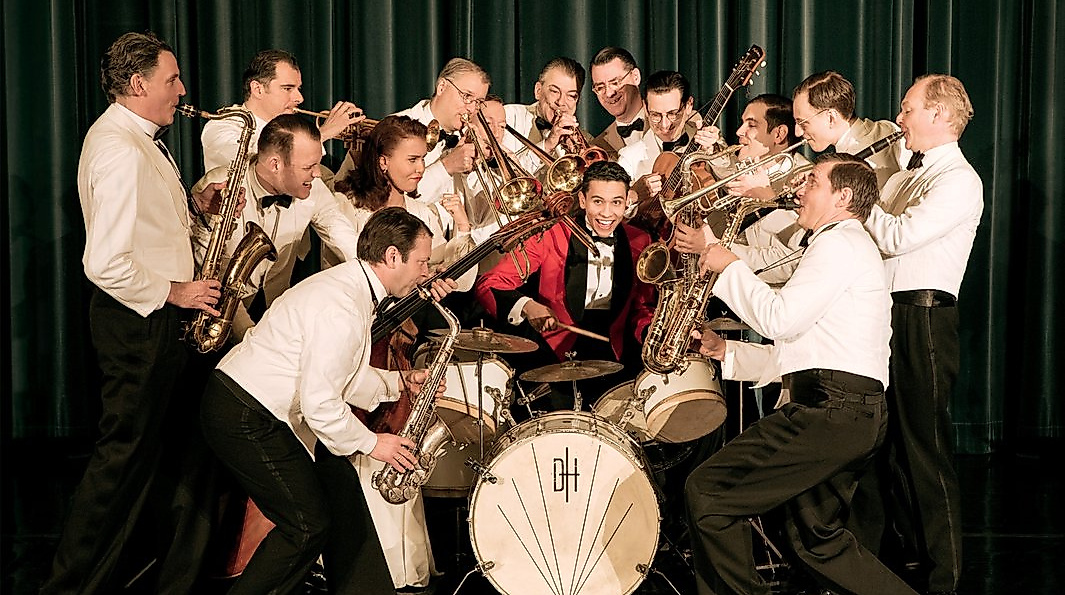
Swing Dance Orchestra
- Jazz, Blues, Swing & Chanson
A great moment in jazz: on 16 January 1938, a young man and his musicians took to the stage of the sold-out Carnegie Hall, visibly nervous. Benny Goodman had not wanted to give this concert. The famous patron John Hammond, whose sister Alice would later marry Benny Goodman, and some eager agents had persuaded him to do so. This was the first performance by a jazz band in the New York concert hall, where otherwise only classical music could be heard. In front of an audience of more than 2,000, Benny Goodman, dressed in a tailcoat, played the concert of his life. His big band had reached its zenith in those days, and Goodman would never have such a high-calibre line-up again.
In addition to the orchestra, the trio and the quartet played – with Lionel Hampton on vibraphone and Teddy Wilson on piano. Martha Tilton sang »Loch Lomond« and »Bei mir bist du schoen« – Count Basie, Buck Clayton, Lester Young and other jazz musicians joined the Goodman band for a jam session on – »Honeysuckle Rose«. The unexpected enthusiasm of the rather conservative audience swept Benny Goodman and his band off their feet, lucky for posterity that John Hammond had the concert recorded.
To this day, the album with the recordings of that evening in Carnegie Hall is one of the best-selling jazz productions ever and is reissued time and again. Even as a child, listening to these legendary recordings, Andrej Hermlin dreamed of a band like the one with which Benny Goodman celebrated his triumphs. Consequently, his next ambitious project was to re-perform the concert that made his idol Benny Goodman a legend. This performance is less about a faithful copy of the score and more about capturing the authentic atmosphere of that evening in Carnegie Hall. True-to-style suits, music stands, no electronic tricks; this is how the resurrection should succeed.
PERFORMERS
Swing Dance Orchestra orchestra
Andrej Hermlin director
Rachel Hermlin vocals
David Hermlin drums
Lorenzo Baldasso clarinet
No liability is assumed for the correctness of the data.










